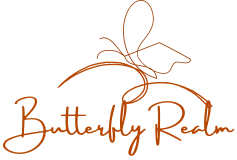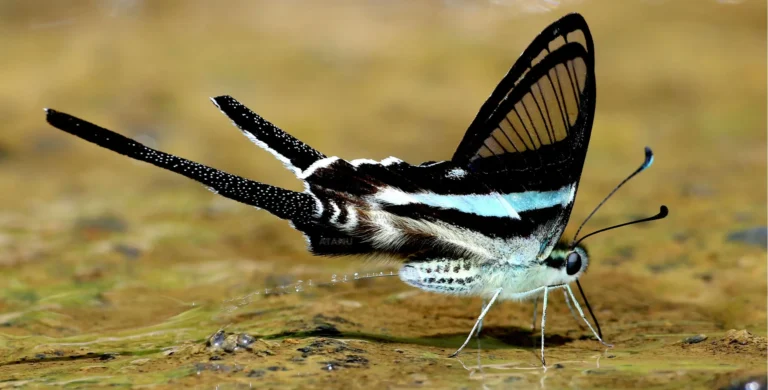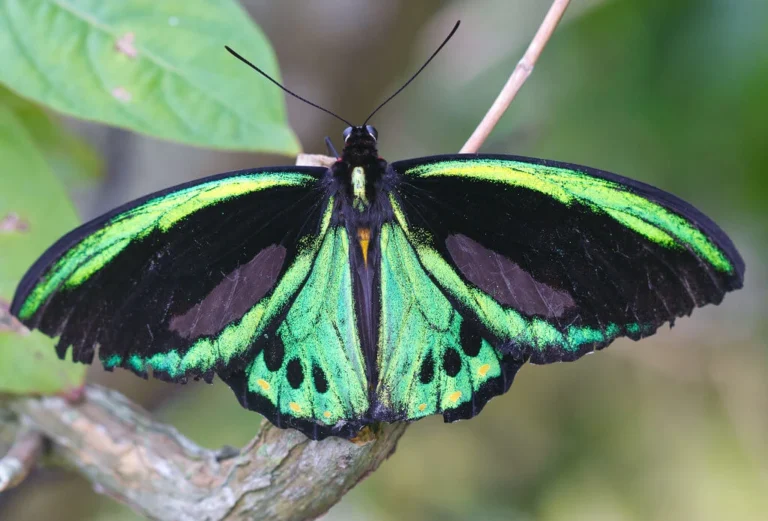Common Grass Yellow Butterfly (Eurema Hecabe): Lifecycle, Biology, Identification
Quick Summary: The Common Grass Yellow Butterfly, also known by its scientific name Eurema Hecabe, is a small, bright yellow butterfly often seen in gardens and fields. It has a wingspan of 35 to 45 millimeters and mainly feeds on flower nectar. The butterfly’s life cycle has four stages: eggs, larvae, pupae, and adults. Eggs are tiny and laid on the undersides of leaves, hatching into green caterpillars that feed on leaves. The caterpillars then form a pupa, where they transform into adult butterflies. These butterflies live in warm climates and are found in places like Asia, Africa, and Australia.
Table of Contents
Introduction To Common Grass Yellow Butterfly
The Common Grass Yellow Butterfly is a fascinating creature with vibrant yellow wings that you may often see fluttering in gardens, fields, and even sometimes near ponds. It’s a favorite among people who like to watch butterflies.
This article aims to provide a detailed look at the Common Grass Yellow Butterfly. We will go through its life stages, what it looks like, where you can find it, and what role it plays in nature.
Biology of Eurema Hecabe
Physical Description
Size
When it comes to size, the Common Grass Yellow Butterfly is not a large butterfly, but it’s also not tiny. Adult butterflies usually have a wingspan that ranges from 35 to 45 millimeters. This makes them easy to spot but not overwhelming in size.
Coloration
The color of the Common Grass Yellow Butterfly is mostly yellow. This bright color helps them blend in with flowers and leaves, but it also makes them stand out when they are flying. The edges of their wings might have some brown or orange shades, which creates a lovely contrast.
Morphology
This butterfly has a typical shape that is common to most butterflies. It has two wings on each side, antennas to sense their surroundings, and a slender body. The wings are usually rounded, but the tips can be slightly pointed.
Lifecycle of Common Grass Yellow Butterfly
Eggs
Description of the Egg’s Shape
The eggs of this butterfly are shaped like tiny round balls. They are usually laid singly or in small clusters.
For more on butterfly eggs, you can check out our article on Luna Moth Eggs.
Size Dimensions
Each egg is quite small, usually about 1 to 1.5 millimeters in diameter. Despite their small size, they are the beginning of a new butterfly’s life.
Coloration
When first laid, the eggs are generally a pale yellow or cream color. As time passes, they might turn a bit darker.
Common Places Where They Are Laid
Mother butterflies often lay these eggs on the underside of leaves. This helps to keep them safe from predators and also shields them from the sun.
Duration Until Hatching
The eggs don’t take long to hatch. Usually, in about 3 to 5 days, tiny caterpillars emerge to start their journey of becoming butterflies.
Common Grass Yellow Butterfly Larvae Stage
Physical Attributes
The caterpillar, also known as larvae, is greenish in color and has a soft body. It is quite small when it first hatches but grows quickly.
Shape
The caterpillar has a cylindrical shape, much like a small tube.
Size
Initially, they are very small, almost the size of a rice grain, but as they eat and grow, they can reach up to 30 mm in length.
Color
The larvae are usually green, which helps them blend in with the leaves they eat and live on.
Feeding Habits
Caterpillars are very hungry and spend most of their time eating leaves. They prefer specific types of plants and will usually stick to those.
Behavioral Characteristics
These little creatures are quite active but tend to eat and live on the same plant unless they have to move due to lack of food or danger.
Duration of the Larval Stage
The caterpillar stage lasts for about two weeks. After that, they prepare to enter the next stage, which is the pupal stage.
Pupae
Physical Attributes
The pupa, also called a chrysalis, is where the caterpillar transforms into a butterfly. It has a hard outer shell.
Shape
The chrysalis is oval and somewhat resembles a small capsule.
Size
It is usually about 20 to 30 mm in length.
Color
The color can range from green to brown, depending on the surrounding environment. This helps it blend in and stay hidden from predators.
Behavioral Characteristics
During this stage, it appears as though the pupa is resting, but inside, a lot of changes are happening. The caterpillar is transforming into a butterfly.
Pupation Site Selection
Before forming the chrysalis, the caterpillar selects a quiet and hidden spot, usually on the underside of a leaf or a twig.
Duration of the Pupal Stage
This stage lasts for about 10 to 15 days. When the time is right, the adult butterfly comes out.
Adult
The adult Common Grass Yellow Butterfly usually has a wingspan ranging from 35 to 45 millimeters. Most of them are primarily yellow, with some individuals having brown or orange edges on their wings.
To compare this with other species, read our article on the Monarch Butterfly Lifespan, where we discuss size among other features.
While males and females look similar, females sometimes have more markings.
Adult butterflies primarily feed on nectar from flowers. They are often seen hovering around flowers and are known for their unique mating rituals. Males chase females and they often mate in the air or on the surfaces of plants.
After mating, females lay eggs and the life cycle begins again. The lifespan of an adult is usually about two to four weeks.
Common Grass Yellow Butterfly Habitat and Distribution
The Common Grass Yellow Butterfly is found in a variety of places. They are especially common in Asia, Africa, and Australia.
These butterflies prefer warm climates and are often seen in open fields, gardens, and sometimes near water bodies like ponds.
In terms of seasonal migration, some do migrate for food and better living conditions, but many prefer to stay in the same geographical area.
Role in Ecosystem
These butterflies are important for several reasons. First, they are pollinators. While sipping nectar, they move pollen from one flower to another, helping plants to reproduce.
They also have various interactions with other species. They serve as food for predators like birds and spiders.
To understand how butterflies interact with other species, read our article on Are Monarch Butterflies Poisonous?
Some even have symbiotic relationships with certain plants, benefiting each other in different ways.
Overall, their presence or absence can tell us a lot about the health of an environment.
Cultural and Symbolic Significance
The Common Grass Yellow Butterfly holds a special place in different cultures. In some stories and myths, they are considered signs of good luck or transformation.
Artists often use their vibrant yellow color as inspiration in paintings and other forms of art.
They also appear in children’s books and educational material, helping to introduce the young generation to the world of butterflies and environmental science.
How to Spot a Common Grass Yellow Butterfly
If you’re interested in spotting one of these beautiful butterflies, there are some things to keep in mind:
Equipment Needed
- A good pair of binoculars can help you spot them from a distance.
- A camera with a zoom lens can capture their stunning details.
Best Seasons and Times of Day
- Late spring and summer are the best times to spot these butterflies.
- They are most active during mid-morning and late afternoon.
Tips and Tricks
- Look for them in gardens with bright flowers, as they are attracted to nectar.
- Pay attention to the undersides of leaves, as females often lay eggs there.
Frequently Asked Questions
What is the Common Grass Yellow Behavior?
The Common Grass Yellow Butterfly is a diurnal insect, meaning it is active during the day. They are usually seen fluttering close to the ground in open areas, gardens, and fields.
They often hover around flowering plants as they are primarily nectar feeders. The mating behavior often involves males chasing females through the air.
Once mated, females lay their eggs on host plants where the larvae will have immediate access to food upon hatching.
What Does the Common Grass Yellow Feed On?
Adult Common Grass Yellow Butterflies mainly feed on nectar from flowers. To compare this feeding habit with other species, check out our article on Monarch Butterfly Eggs, where we discuss what Monarch larvae feed on.
As for the larvae (caterpillars), they feed on the leaves of specific host plants. These plants belong to the Fabaceae family, which includes various legumes.
The caterpillars are voracious eaters and consume leaves to gain the energy required for transformation into the adult form.
What is the Common Grass Yellow Taxonomy?
The taxonomic classification of the Common Grass Yellow Butterfly is as follows:
Kingdom: Animalia
Phylum: Arthropoda
Class: Insecta
Order: Lepidoptera
Family: Pieridae
Genus: Eurema
Species: Eurema Hecabe
What is a Common Grass Yellow Female?
Female Common Grass Yellow Butterflies look similar to their male counterparts but can often have more markings on their wings. These markings are usually in shades of brown or orange.
After mating, the female lays eggs on specific host plants, preferring to place them on the undersides of leaves for protection.
The female plays a crucial role in the continuation of the species as she selects the plants that will serve as the initial food source for the larvae.
Summary and Conclusion
We’ve taken a detailed journey through the life and significance of the Common Grass Yellow Butterfly, also known by its scientific name, Eurema Hecabe.
We’ve learned about their physical features, their journey from egg to adult, where they live, and what role they play in nature.
Understanding the biology, habitat, and role of these butterflies in the ecosystem is crucial for biodiversity. They not only add beauty to our world but also play significant roles as pollinators and indicators of environmental health.
What You Can Do to Contribute to Biodiversity
You can contribute to the protection and understanding of these amazing creatures in simple ways:
- Plant flowers that attract butterflies.
- Avoid using pesticides in your garden.
- Share what you’ve learned about these butterflies to create awareness.
By taking these steps, you’re not just helping the Common Grass Yellow Butterfly but also contributing to a healthier and more balanced ecosystem.



